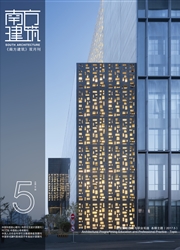

 中文摘要:
中文摘要:
开放空间的环境活力是旧城更新的基本目标之一。基于旧城居住社区的社会活力比经济活力及文化活力更为重要的理念,利用空间使用方式、认知要素和环境特征三个基本维度建立广州西关传统居住社区公共开放空间环境活力度的要素模型,以时隔一年的两次问卷调查的量化方法检验广州西关旧城居住社区的环境活力。多元回归分析发现,"可坐性""活动愿望""公共空间的数量"和"锻炼行为强度"是4个基本的环境活力度预测变量;因子分析表明,开放空间环境活力的关联因素模型包含"空间环境现状""环境认知""行为特性""空间拥挤度"等四个相互独立的维度,该模型是广州西关旧城社区开放空间更新的重要线索。
 英文摘要:
英文摘要:
Environmental vitality of open space is an elementary object of old city renewal. Based on the viewpoint that social vitality is more importance than economic vitality and culture vitality for residential community in old city area,the activities and behavior patterns,cognitive factor and environmental characteristics of residential community open space are taken as the three basic dimensions for judging environmental vitality. After establishing factor model of degree of environmental vitality( DEV),a quantitative research by questionnaire survey was conducted,and data collected at twice interval of a year. Through multivariate regression analysis,it is shown that there are four variables which can predict DEV; they are facilities for sitting,desire to activities,quantity of open space,and intensity of physical training behavior. Factor analyses show that the four mutual independence dimensionalities included in factor model of DEV are environmental status,environmental cognition,behavioral characteristic,and crowding degree of space. This model is a key clue for the renewal of Xiguan' s old city.
 同期刊论文项目
同期刊论文项目
 同项目期刊论文
同项目期刊论文
 期刊信息
期刊信息
